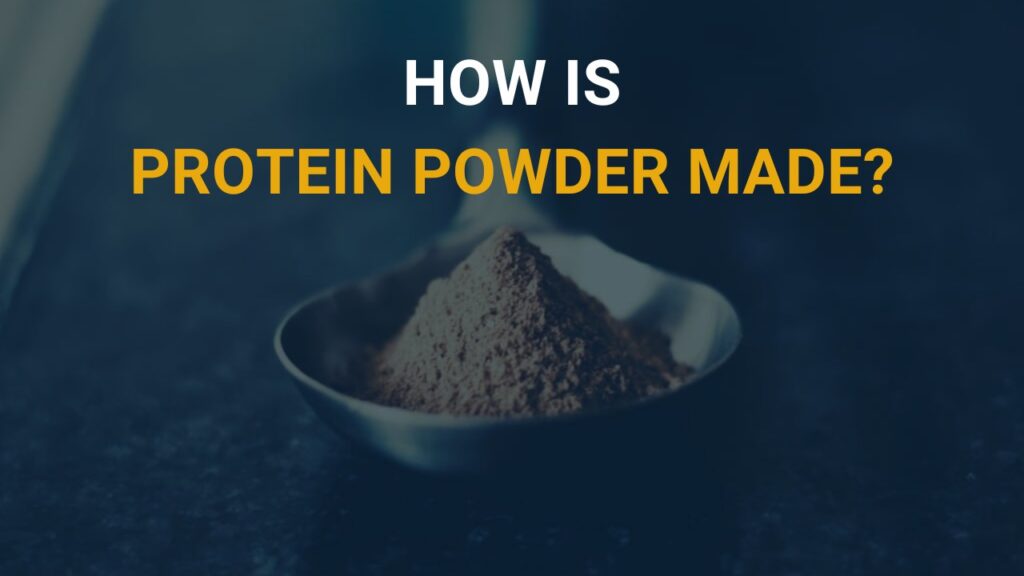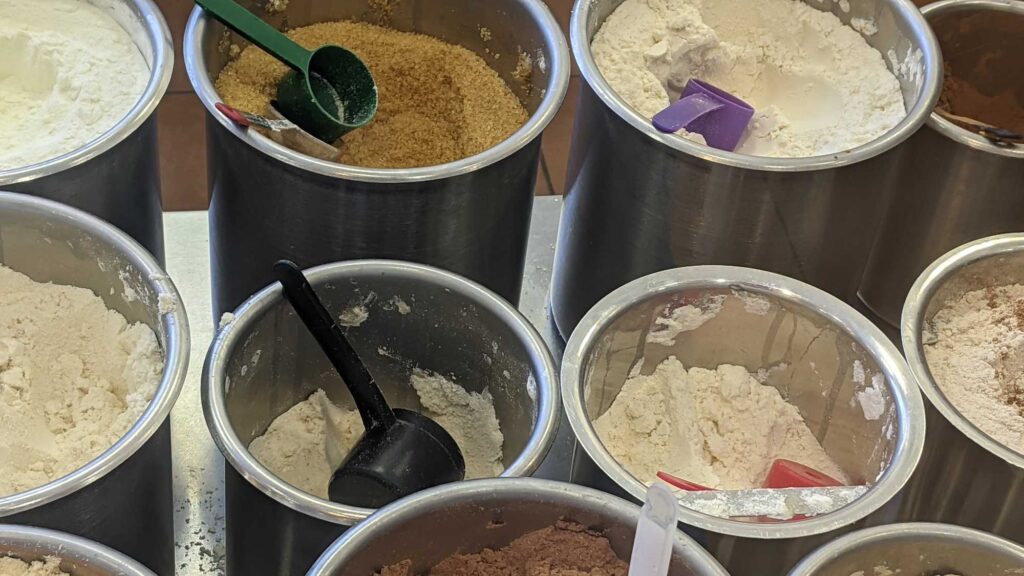Protein powders have become a staple in the diets of many fitness enthusiasts, athletes, and health-conscious individuals. These supplements provide a convenient and concentrated source of protein, which is essential for muscle repair, growth, and overall health. Have you ever wondered how protein powder is made?
In this comprehensive guide, we will take you through the manufacturing process, explore various types of protein powders, discuss their nutritional value, address potential risks, and offer tips on choosing the best one for your needs.

Table of Contents
How Protein Powders are Made
The production of protein powder involves several key steps:
- Raw Material Selection: The primary sources of protein for powders include whey (from milk), casein (also from milk), soy, pea, rice, hemp, and more. The choice of raw material determines the type of protein powder.
- Extraction: The protein is extracted from the raw material using various methods. For example, whey protein is often separated from milk through filtration and precipitation techniques.
- Purification: The extracted protein undergoes purification to remove impurities, including fats, lactose, and carbohydrates.
- Drying: The purified protein is then dried into a powder form. This can be achieved through processes like spray drying, drum drying, or freeze drying.
- Flavoring and Sweetening: Depending on the intended product, flavorings, sweeteners, and additional ingredients like vitamins and minerals may be added.
- Quality Control: Quality control measures, including testing for purity, protein content, and contaminants, are implemented to ensure the final product meets safety and quality standards.
- Packaging: The finished protein powder is packaged into containers, often with labels indicating the type, flavor, and nutritional information.
The Different Types of Protein Powders
There are various types of protein powders available, each with unique characteristics:
- Whey Protein: Derived from milk, whey protein is rapidly absorbed and contains all essential amino acids, making it a popular choice for muscle recovery.
- Casein Protein: Also from milk, casein is slow-digesting, making it suitable for sustained protein release, such as during sleep.
- Soy Protein: Ideal for vegetarians and vegans, soy protein contains all essential amino acids and is known for its heart-healthy properties.
- Pea Protein: Plant-based and easily digestible, pea protein is often used by those with dietary restrictions and is rich in branched-chain amino acids (BCAAs).
- Rice Protein: Derived from brown rice, this hypoallergenic option is suitable for those with allergies or sensitivities.
- Hemp Protein: Made from hemp seeds, it’s a complete protein source and offers additional nutrients like omega-3 fatty acids.
The Nutritional Value of Protein Powders
Protein powders provide concentrated protein without the extra calories, making them an efficient way to meet daily protein requirements. They can support muscle growth, repair, and overall health when incorporated into a balanced diet and active lifestyle. Depending on the type, protein powders may offer additional benefits such as improved digestion, heart health, or antioxidant properties.
The Risk of Protein Powders
While protein powders are generally safe for most individuals, there are potential risks to be aware of:
- Allergies: Some people may be allergic to specific protein sources, like whey or soy. It’s crucial to choose a protein powder that aligns with your allergies.
- Digestive Issues: Protein powders can sometimes cause digestive discomfort, such as gas or bloating, especially when consumed in excessive amounts or without sufficient hydration.
- Contaminants: Low-quality protein powders may contain contaminants or impurities. Choose products from reputable brands that undergo third-party testing.
How to Choose the Best Protein Powder for You
To select the best protein powder for your needs, consider the following factors:
- Protein Type: Choose a protein powder that aligns with your dietary preferences and fitness goals.
- Purity: Opt for products with minimal additives, fillers, or artificial ingredients.
- Quality: Select protein powders from reputable brands with a history of quality and safety.
- Taste and Texture: Experiment with different flavors and textures to find one that you enjoy.
- Dietary Restrictions: If you have dietary restrictions or allergies, ensure the protein powder you choose aligns with your needs.
- Consult a Nutritionist: For personalized guidance, consult with a nutritionist or healthcare provider, especially if you have specific dietary goals or health concerns.

Protein powders are a versatile and effective way to increase your protein intake. Understanding how they are made, the different types available, their nutritional value, and potential risks empowers you to make informed choices about which protein powder suits your individual needs. Remember that protein powder should complement a balanced diet and active lifestyle for optimal results.


